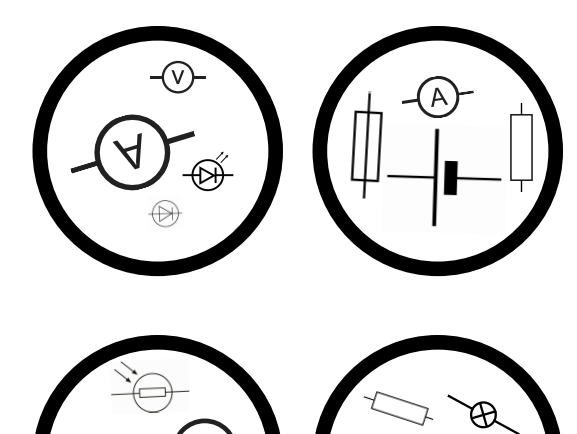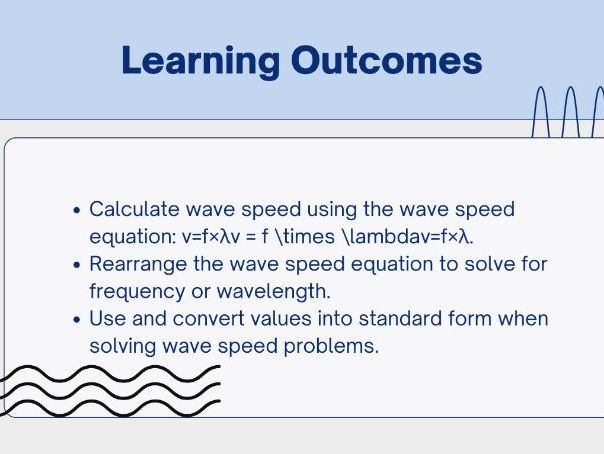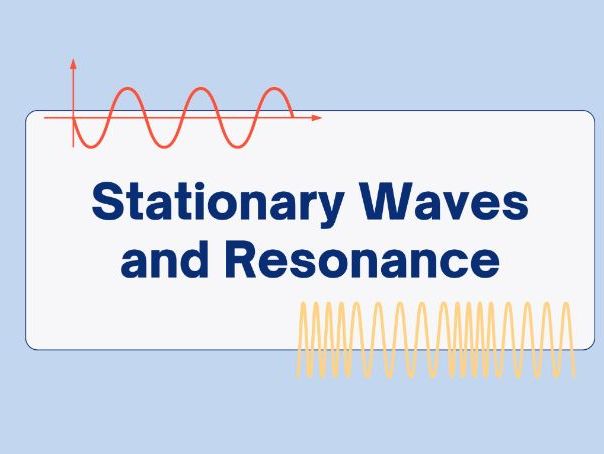18Uploads
924Views
345Downloads
Physics

Diffraction/ Applied science/ AAQ
Understanding Diffraction and Diffraction Gratings
Lesson Description:
In this engaging and interactive lesson, students will explore the foundational and advanced concepts of diffraction, with a particular focus on its application through diffraction gratings. The lesson begins by introducing the basic definition and characteristics of diffraction using real-world analogies and visual demonstrations.
Through short, focused content videos, students will build conceptual understanding of key wave properties such as displacement, coherence, path difference, phase difference, and superposition, all within the context of how these contribute to diffraction patterns.
The lesson then progresses to demonstrate how diffraction gratings work and how they are used in scientific analysis—particularly in studying emission spectra. By breaking light into its component wavelengths, students will learn how diffraction gratings allow scientists to identify chemical elements based on their unique spectral lines.
Throughout the lesson, knowledge check activities are embedded to reinforce learning. These include multiple-choice and short-answer questions designed to test understanding of key terms and concepts, as well as applications of the diffraction principles in spectroscopy.
Learning Outcomes:
By the end of this lesson, students will be able to:
Define the term diffraction and recognize its occurrence in various wave types.
Describe the concepts of displacement, coherence, path difference, phase difference, and superposition as they relate to the behavior of waves passing through diffraction gratings.
Explain how diffraction gratings are used to analyze emission spectra, and how this technique contributes to scientific discovery and practical applications in physics and chemistry.

Electric circuit symbol game/ Spot it electric symbol recall
This resource is an excellent way to test the students memory on circuit symbols. This game contains all GCSE circuit symbols.
How to play:
Spot it! consists of 13 cards, with 4 symbols per card (you can print the set double for a longer and more challenging activity)
Each card contains symbols from GCSE circuit symbols.
There is only one identical symbol in common between each card, it is up to you to find out which one.
-Each person playing is dealt a pile of cards that they look at. A central card is placed between all the players. So if you are playing, you are looking at the top card in your pile of cards and trying to find the image that it shares with the central card.
-Now everyone is trying to find the images that matches the new central card. The goal of the game is to get rid of all your opponents cards.
Another variation works basically like SET. You place nine cards in a 3x3 grid in the center of the table. Then everyone looks for a set of three cards that all share the same image. If you spot a set, you keep those three cards. It’s a bit more challenging than finding a single shared image, but still very accessible for young kids

Calculating wave speed/ including standard form/ AAQ BTEC/ GCSE
This PowerPoint lesson is designed to teach students how to calculate wave speed using the equation
𝑣=f×λ, rearrange the equation to solve for frequency or wavelength, and confidently use and convert values in standard form. Suitable for both GCSE and BTEC (Applied Science – AAQ), the lesson includes a differentiated worksheet that progresses from easy to challenging tasks, allowing all learners to access and extend their understanding. The resource features built-in Assessment for Learning (AfL) opportunities, including quick checks and class discussions, as well as stretch and challenge prompts to push higher-ability students. Ideal for a complete lesson on wave calculations and standard form application.

Intro to waves/ Applied science/ AAQ/ Pearson
Overview of Lesson Presentation: Introduction to Waves
This presentation provides a comprehensive introduction to the topic of waves. It covers key foundational concepts and terminology essential for understanding wave behavior and properties.
Learning Outcomes:
Define and understand the terms: periodic time, wave speed, wavelength, frequency, amplitude, and oscillation.
Explain the basic structure of a wave.
Distinguish between longitudinal and transverse waves.
Included Components:
Clear and concise explanations of wave structure and key concepts.
Quick check questions to reinforce understanding.
Application-based questions to extend learning and apply concepts in context.
A visual “First Model Vocab” section that can be printed for classroom display or used as student flashcards.

Diffraction Grating practical
This practical lesson is designed to develop students’ understanding of diffraction gratings and the measurement of light wavelengths. Students will investigate how red, green, and blue light are diffracted and use their results to calculate wavelengths accurately.
The lesson includes:
Starter Activity: An engaging PowerPoint slide to recap prior knowledge about the wave nature of light and introduce diffraction gratings.
Lesson Description: A clear explanation of the aims of the experiment, highlighting the significance of measuring the wavelengths of different colours.
Method: A step-by-step guide detailing how to set up the diffraction grating, align the laser or ray box, measure the diffraction angles, and record the data.
Equipment List: Includes a laser (or ray box with coloured filters), diffraction grating, ruler, protractor, white screen, and mat for equipment placement.
Risk Assessment: Covers safe handling of lasers (avoiding direct eye contact), ensuring cables are neatly managed, and general laboratory safety.
Results Table: A structured table for recording angles of diffraction and calculated wavelengths for red, green, and blue light.
Comparison Table: Allows students to compare their calculated wavelengths with accepted values and evaluate the accuracy of their experiment.
Mat Layout: A printout showing the recommended positions for different pieces of equipment, helping to standardise the setup and improve accuracy.
Analysis: Guidance on using the diffraction grating formula to calculate wavelengths and discussion questions to encourage critical thinking about sources of error and reliability.
This practical can be carried out using either a laser (providing a more precise, monochromatic beam) or a ray box.
This lesson aims to build students’ confidence in experimental design, data analysis, and evaluation skills, preparing them for higher-level physics studies and reinforcing the wave nature of light.

Stationary waves and resonance/ A - Level / AAQ / no planning
Lesson Overview:
This lesson introduces learners to stationary (standing) waves, resonance, and damping, with a focus on real-life applications. Through interactive demonstrations, guided modeling, and applied tasks, students will explore the behaviour of waves and their practical consequences. Emphasis is placed on recognising scientific principles in everyday scenarios, such as musical instruments, bridges, and vehicle design. Students will apply knowledge, receive feedback, and reflect on learning to build exam-relevant understanding.
Lesson Objectives (Outcomes):
By the end of the lesson, students will be able to:
Identify and describe standing (stationary) waves, including the concepts of nodes and antinodes, and give examples from everyday life (e.g., guitar strings, microwave ovens).
Explain the concept of resonance and describe how it can be useful (e.g., tuning instruments) or dangerous (e.g., Tacoma Narrows Bridge).
Understand what damping is, describe how it reduces vibrations, and explain its importance in practical applications.

Musical instrument and Resonance
This lesson introduces students to the concept of resonance and its role in the production of sound in different types of musical instruments.
The main body of the lesson focuses on three interconnected areas:
Resonance in instruments - Students learn how resonance occurs in strings, wind instruments.
Harmonics and wavelength relationships - Using diagrams and interactive simulations, students compare the wavelength of each harmonic with the fundamental frequency, reinforcing their understanding of wave patterns.
Overtones and harmonics- Students identify how overtones and harmonics arise in both stringed and wind instruments by drawing standing waves and analysing real-life examples.
Throughout the lesson, interactive activities such as simulations, diagram drawing, and class discussions help students to test and apply their knowledge.
The lesson concludes with a plenary quiz and reflective discussion, allowing students to consolidate their learning and demonstrate progress.
By the end of the lesson, students are able to:
Describe how resonance occurs in different types of musical instruments.
Compare the wavelength of each harmonic in relation to the fundamental frequency.
Identify how overtones and harmonics are produced in string and wind instruments.

String equation
In the lesson, students will be able to:
Determine the wavelength of a wave on a string using the equations:
Rearrange the string wave equation to calculate wave speed, tension, or mass per unit length.
Express final answers in standard form, applying the correct use of units and significant figures.
Activities:
Worked examples on calculating wave properties.
Guided practice rearranging equations.
Independent problem-solving tasks with increasing challenge.
Peer review of answers to check use of significant figures and units.

Working with waves A1 Bundle /AAQ Edexcel
Bundle: 7 Complete Lessons – Edexcel Applied Science Unit 3: Principles and Applications of Physics (A1 Working with Waves)
This bundle contains 7 fully prepared lessons with no additional planning required. Each lesson provides comprehensive coverage of Unit 3, A1: Working with Waves for Edexcel Applied Science, including explanations, activities, and applications.
Lessons included:
Lesson 1: Introduction to Waves
Lesson 2: Diffraction Grating
Lesson 3: Diffraction Practical
Lesson 4: Wave Speed
Lesson 5: Stationary Waves
Lesson 6: Musical Instruments and Resonance
Lesson 7: String Equation
Designed to save time and support high-quality delivery, this resource is ideal for teachers covering the AQA/Edexcel Applied Science specification.









